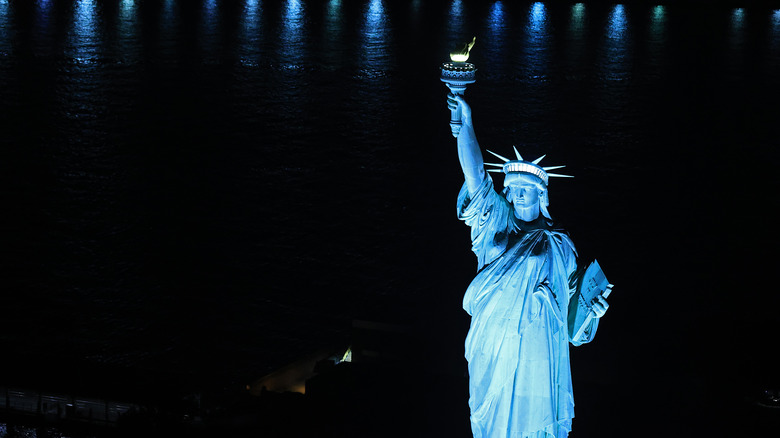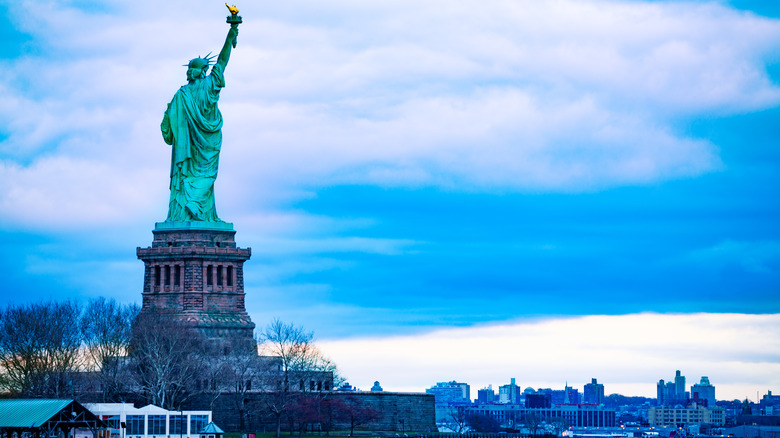The Reason You Can't Visit The Statue Of Liberty's Torch
As a tourist attraction, the Statue of Liberty provides plenty to see. The French gift, designed by Auguste Bartholdi to represent America's treasured freedom, was dedicated in 1886 and has become a famous part of the New York Harbor since (from Museum of the City of New York). The statue itself stands on the 12-acre Liberty Island near Lower Manhattan, according to USA Today. Inside lies a plethora of museum exhibits, from The Statue of Liberty Exhibit inside the statue's pedestal and on the second floor — featuring photos, artifacts, and prints detailing the monument's history — to a visit to the promenade and observatory where you can see views of the harbor and the statue's framework.
Experiencing the Statue of Liberty requires good sneakers. You will climb 215 steps (about ten stories) to get to the top of the pedestal. From there, it's 162 more steps to the top of the crown, according to National Park Service. Many of those are on a narrow double-helix staircase. If you can go the equivalent of about 27 stories without using an elevator, you'll be just fine. A timed ticket is required to make this trip, said the National Park Service, and sometimes reservations book up four to six months in advance.
If you want to visit the torch, though, that's off-limits ... no tourist has ventured up there for more than a century, reported NBC News.
A sudden explosion changes everything
The visitor ban on the Statue of Liberty's torch began after a large (and loud) July 30, 1916, explosion on Black Tom Island in New York Harbor, said NBC News. "It was a terrific explosion — the worst that had ever happened in New York," said Kenneth Jackson, a history professor at Columbia University, said to the broadcast station. The detonation broke glass windows miles away in Manhattan and killed seven people. It also closed the torch area off, as a commemorative marker notes on the site.
Black Tom, according to History, was a small island that became a World War I epicenter for munitions and gunpowder assembly and shipping. The United States, at the time, had not yet entered the fray but did sell the arms, mostly to allies like Britain, France, and Russia. The massive explosion occurred at 2:08 in the morning and was repeated by a second one a half an hour later. Some $20 million ($500 million today) of property experienced damage. After years of investigations, it was determined that Germans had sabotaged the site. Lawyers won a 1939 international tribunal case against Germany but Hitler refused to fund the settlement. The case's deal was renegotiated in the early '50s and claimants received compensation, with the last payment made in 1979.
As for the torch, it never reopened. If you want to see the view from it though, you can try the Statue of Liberty's webcam.

